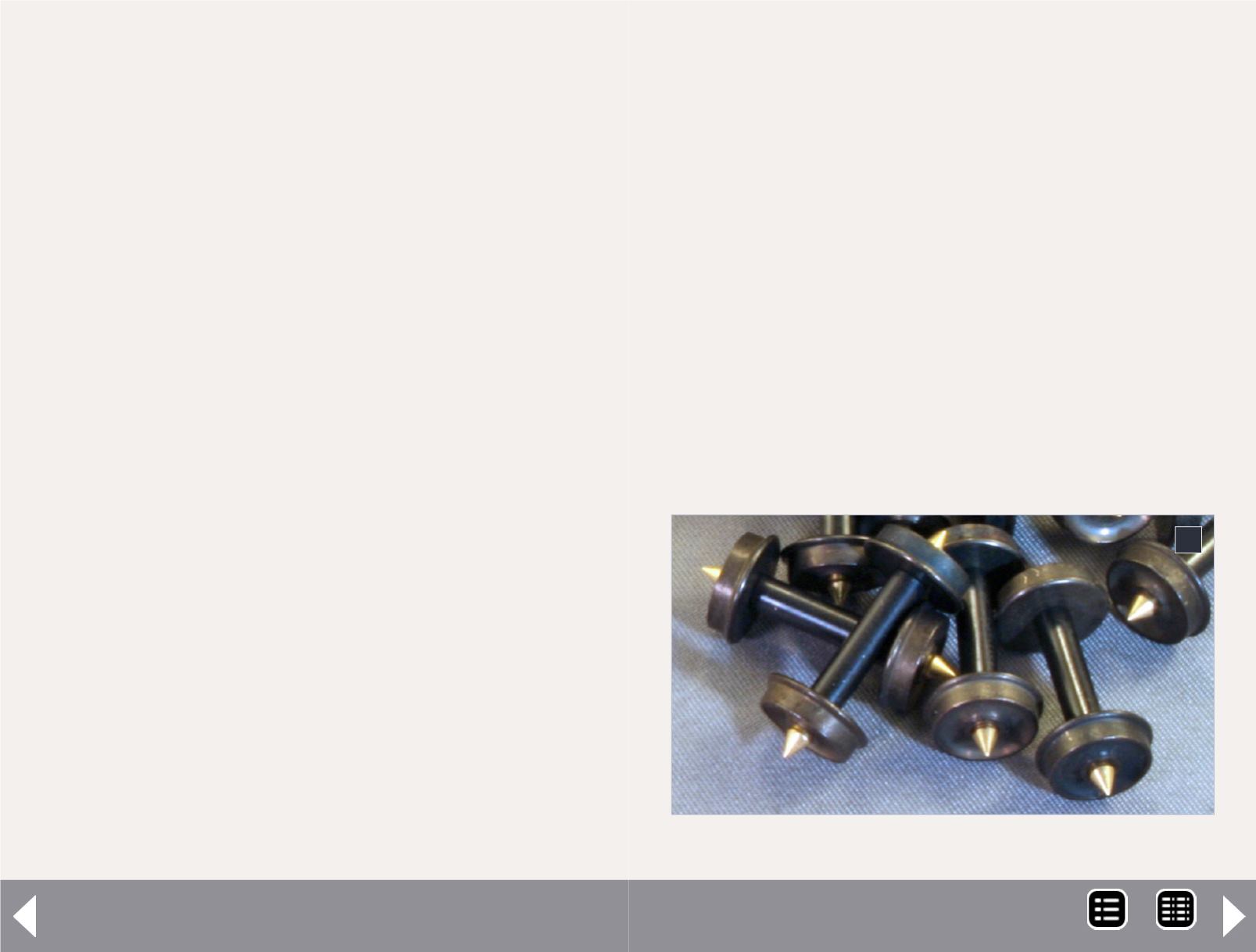
of two booster districts without some fancy electronics that
are beyond the scope of this column.
Plan ahead
If you think you might ever be interested in signaling or com-
puter control, you can make later conversion much easier if
you plan for it before you build (or rewire) your layout. What I
recommend is:
Decide what sections of track you might want to make into
dection districts in the future, then:
Cut the track gaps to isolate these sections.
Wire each section to its own (14 AWG) detection district –
both rails.
Connect each detection district bus to the booster district
bus.
That way, you are ready to add block detection whenever the
mood strikes you.
Also, if your goal is to signal your layout, you may want to
decide upon a signal system before you choose your detectors.
While any detector can, theoretically, work with any signal sys-
tem, many are plug-and-play if you have the right parts. Signal
systems will be a topic for a future column.
Gap one rail or two?
Since detectors sense current flow in one rail only, there is no
reason to gap both rails, as long as you are consistent in which
rail you gap throughout the layout. However, gapping both rails
is essential in reversing districts, as you must switch the power
being applied to both rails.
That said, I recommend that you gap both rails, especially if
you are building a new layout. Why? As I mentioned, you need
to be consistent throughtout the layout and it is easy to gap
the wrong rail in a very inconvenient place. If they are both
gapped in the construction phase, it is simply a wiring change
to adjust which rail is isolated.
My preferred method of gapping is to use the thinnest (0.02")
cutoff wheel in my rotary tool and slice the rail in a straight
section of track. Let me say that again, “in a STRAIGHT section
of track.” Gluing a piece of 0.02" thick piece of (black) styrene
in it makes the gap disappear. I use the fine-grit emery boards
(from the beauty supply store) to smooth out the top and sides
of the rail head, especially the inside. Plastic sticking out from
the web will be mostly covered by ballast and not very obvious.
The result is much better looking than the ugly insulating join-
ers, to my eye.
2
2: Resistor wheesets from Jay Bee – photo by the author.
DCC Impulses - 3
MRH-Aug 2013


